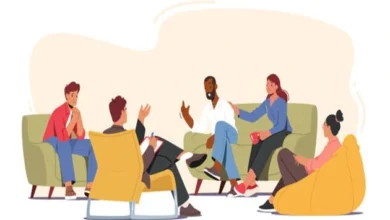How to work effectively with a large amount of information

Most of us have to deal with a lot of information when we study or work. Sometimes, this causes real concern because memory only sometimes works as well as we want it to. In addition, we can easily miss something by reading an endless stream of sentences hour after hour. Still, there are several ways to work with a large amount of information without getting upset and going crazy from overload.
6 tips on how to work with plenty of information
1. Break large texts into parts

Dividing large texts into parts is a great way to avoid getting confused about what you read, and it also helps you take a short break to rest and recuperate. For example, if you need to read seventy-five pages of a practical but dull and challenging book, you should not try to do it in one sitting.
Try to familiarize yourself with them in three sessions: read twenty-five pages each for three consecutive days. When you break a large text into parts, it becomes easier to notice small details, keep your concentration, and remember what is important.
In addition, if you take breaks after a certain reading period and then repeat the material you have studied, your long-term memory will work much better. It also trains your ability to manage your own time and avoid the stress of cramming at the last minute.
2. Master the art of skimming
Long articles and texts can be annoying and bring real heartache. I want to suffer less often but simultaneously take advantage of the opportunity to learn new information and study the art of skimming. It can be called “reading diagonally” when you snatch essential points from the text without reading everything. This helps to reduce the time to study and to identify the content that requires further careful reading.
Here are some skimming methods that will be useful to you:
Search for topics and final sentences
Read the first and last sentence of the paragraph. They almost always contain a basic idea or conclusion that helps you understand whether you need to read the text thoroughly or skip it.
Scan the text in bold or italics
First, pay attention to if certain words and sentences are highlighted in the text, for example, in bold or italics. Usually, these words are the keywords that should be used when trying to find certain information or to understand whether it is worth reading the text in full.
3. Use a three-step approach

If you need to read a voluminous book, but the very thought of it makes you feel depressed, use a three-step approach. It will help to assimilate the text better and simultaneously diversify reading. First, you need to develop an action plan: divide the book’s contents into parts and specify the time allotted for reading each. Then, set specific goals: think about why this book will be helpful for you, and try to find motivation to start reading.
After that, take a notebook or open a text editor on your computer to write out important text elements or indicate pages where you can find especially important information underlined by you with a pencil. This will help avoid the cost of re-reading the text if you need to remember something.
4. Read with someone

To make it easier to cope with a large amount of information, find yourself a reading companion, for example, a classmate or colleague. Distribute the parts of the book among themselves, and then read each his own so he can later retell it to another.
Firstly, it will help you gain additional motivation since you take responsibility for reading in front of another person. Visit. A F R I N I K . C O M. For the full article. Secondly, you unwittingly begin to read more thoughtfully since you must tell about what you have read so that the other person understands you.
Another reason this practice is useful is that discussing something with a like-minded person is always interesting and accompanied by pleasant emotions, reinforcing the craving for learning and relieving tension.
5. Use active engagement methods while reading
Sitting and reading a text, especially if you like it less, can be incredibly boring and mentally exhausting. However, there is still an opportunity to make it more interesting by using active engagement methods. For example, you can take notes in a separate notebook, not just quote important parts of the text but briefly write down your conclusions about what you read or formulate questions that appeared during acquaintance with the information.
You can summarize the sections by briefly “retelling” them on your computer in a separate text document. This makes it easier to understand and simplifies the repetition of information in the future.
6. Prioritize

If you have to work with “mixed” information, it is important to learn how to prioritize. Trying to learn everything at once will lead to congestion, stress, and confusion. To notice the important things and remember the necessary ones, distribute what to pay attention to first and what can wait for a better hour.
For example, you can plan the study of information depending on the sequence of your exams. Or pay attention to books that help you improve the working skills in which you “swim,” and only then move on to improving your knowledge in what you already know well.




